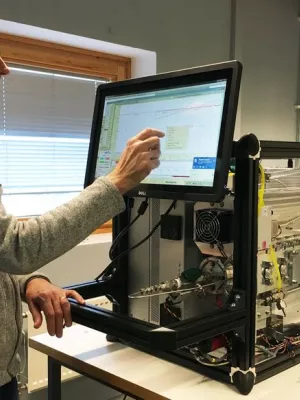
Erik Swietlicki
Professor

Measurement Techniques for Respiratory Tract Deposition of Airborne Nanoparticles: A Critical Review.
Author
Summary, in English
Abstract Determination of the respiratory tract deposition of airborne particles is critical for risk assessment of air pollution, inhaled drug delivery, and understanding of respiratory disease. With the advent of nanotechnology, there has been an increasing interest in the measurement of pulmonary deposition of nanoparticles because of their unique properties in inhalation toxicology and medicine. Over the last century, around 50 studies have presented experimental data on lung deposition of nanoparticles (typical diameter≤100 nm, but here≤300 nm). These data show a considerable variability, partly due to differences in the applied methodologies. In this study, we review the experimental techniques for measuring respiratory tract deposition of nano-sized particles, analyze critical experimental design aspects causing measurement uncertainties, and suggest methodologies for future studies. It is shown that, although particle detection techniques have developed with time, the overall methodology in respiratory tract deposition experiments has not seen similar progress. Available experience from previous research has often not been incorporated, and some methodological design aspects that were overlooked in 30-70% of all studies may have biased the experimental data. This has contributed to a significant uncertainty on the absolute value of the lung deposition fraction of nanoparticles. We estimate the impact of the design aspects on obtained data, discuss solutions to minimize errors, and highlight gaps in the available experimental set of data.
Department/s
- Nuclear physics
- Ergonomics and Aerosol Technology
- NanoLund: Centre for Nanoscience
- MERGE: ModElling the Regional and Global Earth system
Publishing year
2014
Language
English
Pages
229-254
Publication/Series
Journal of Aerosol Medicine and Pulmonary Drug Delivery
Volume
27
Issue
4
Full text
- Available as PDF - 499 kB
- Download statistics
Document type
Journal article review
Publisher
Mary Ann Liebert, Inc.
Topic
- Subatomic Physics
- Production Engineering, Human Work Science and Ergonomics
Keywords
- aerosol
- engineered nanoparticles
- dosimetry
- health
- inhalation
- NSAM
- ultrafine particles
- pulmonary
- lung deposition
Status
Published
ISBN/ISSN/Other
- ISSN: 1941-2703